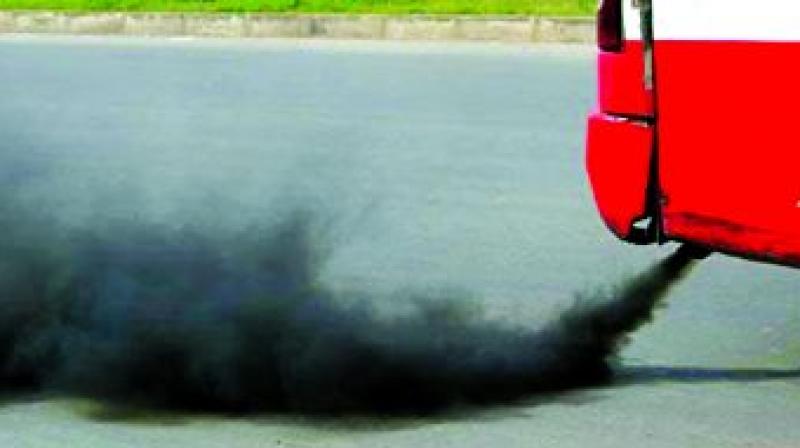Andhra Pradesh air quality much below WHO norms
The latest assessment report on air quality in Andhra cities and towns by Greenpeace India revealed many startling and worrying facts.

Vijayawada: With not even a major city in Andhra Pradesh being able to claim providing clean air to residents, the situation is fast approaching a point that could lead to serious health problems to all.
The latest assessment report on air quality in Andhra cities and towns by Greenpeace India revealed many startling and worrying facts. It has pointed out that the air quality in any city in the state has at least three times more pollution than is prescribed by the WHO as the limits.
A monthly average particulate size matter (PM10) data was obtained from 25 ambient air quality-monitoring stations from 15 cities and towns in Andhra Pradesh between 2015 and 2016.
The size of the particles is directly linked to their potential for causing health problems. Small particles less than 10 micrometres in diameter pose the greatest problem because they can get deep into the lungs. Some of them may even enter the bloodstream.
Exposure to such particles can affect both the lungs and the heart. Numerous scientific studies have linked particle pollution exposure to a variety of problems, including premature death in people with heart or lung disease, non-fatal heart attacks, aggravated asthma, decreased lung functioning, increased respiratory symptoms such as irritation of the airways, coughing or difficulty in breathing.
People suffering from heart or lung diseases, children, and older adults are most likely to be affected by particle pollution exposure.
The report titled “Assessment of air pollution in Indian Cities,” was released recently. The data indicate that all 15 cities had higher concentrations of PM10 and all of them had at least three times more polluted air compared to the WHO annual standard for PM10. Higher percentage of PM10 in the air leads to various health ailments.
The PM10 in all cities and towns in the state that were assessed has been seen to be much above the annual permissible concentration of 60µg/m³ which is prescribed by Central Pollution Control Board (CPCB) under the National Ambient Air Quality Standards (NAAQS).
WHO prescribed standards of PM10 in air stands at 20 µg/m³. One minor relief from the various studies seems to be the fact that the pollution level was almost consistent between 2015 and 2016 with small increases for Visakhapatnam and Vizianagaram and a slight decrease for Guntur, Kurnool, Vijayawada and Eluru.
The decrease, however, is insignificant compared to what is required to bring pollution levels down to breathable air quality as per the Indian standards levels, leaving aside the WHO standards.
Three cities, Anantapur, Vijayawada and Vizianagaram, recorded PM10 levels above the daily standard of 100 µg/m3 for about three months consecutively. Monthly patterns also show variation in months with peak pollution levels in different cities.
Vizianagaram had peak PM10 levels between July and October, while Anantpur and Vijayawada had peak levels between April and November. Similarly, PM10 levels were consistently ranging between 70 µg/m3 and 90 µg/m3 throughout the year for Guntur and Visakhapatnam.
Vijayawada air worse than Vizag’s
Vizianagaram recorded the highest PM10 levels for a given month in the state with values breaching the 130 µg/m3 level in October 2016, while Vijayawada had the highest annual average for PM10 levels that were about 1.7 times the NAAQS prescribed annual standard and five times the WHO annual standard. Annual PM10 average for 2016 for Vijayawada, Guntur, Vizianagaram, Anantapur, and Visakhapatnam were 101, 88, 86, 85 and 77 respectively.
“It's shocking to know that Vijayawada air quality is worse than Vizag which is known as an industrial hub and has many industries around. There is not much greenery in Vijayawada which may have had helped to control pollution. Trees are being axed in the name of development which will worsen the situation,” Vijayawada based Paryavarana Pari-rakshana Vedika convener, Velaga Srinivas told Deccan Chronicle.

